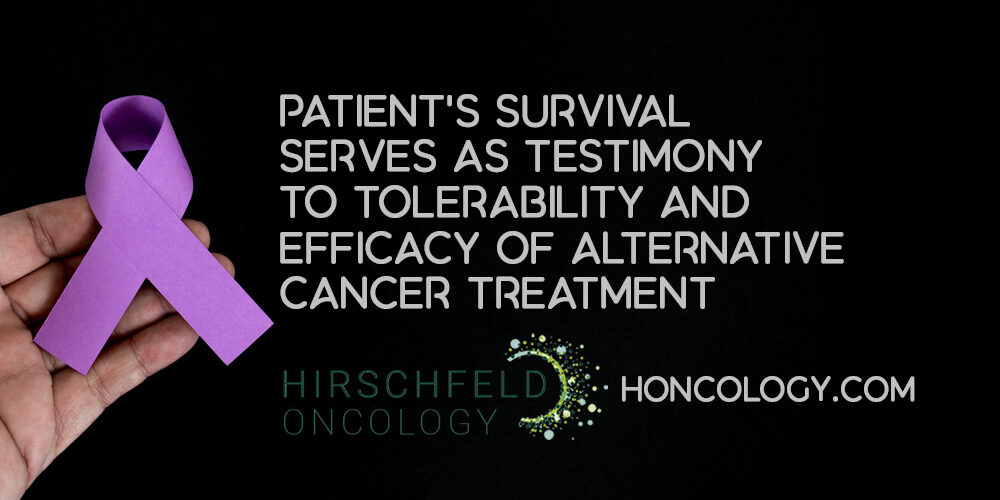The Crucial Role of Side Effect Management in Cancer Care
Enhancing Patient Outcomes Through Side Effect Management
Effective management of side effects plays a vital role in improving outcomes for cancer patients. Side effects from treatments such as chemotherapy, radiation, immunotherapy, and targeted therapies can be severe and varied, affecting numerous body systems including blood counts, cognitive function, and mental health.
Addressing these side effects promptly helps prevent complications like infections, bleeding, and severe fatigue, enabling patients to better tolerate therapies and complete treatment plans with fewer interruptions. Moreover, modern support strategies such as multidisciplinary teams and digital symptom monitoring foster early detection and personalized care.
Preserving Quality of Life and Supporting Treatment Adherence
Side effects significantly impact quality of life, often causing distress through symptoms such as nausea, pain, cognitive impairment, and emotional health challenges like anxiety and depression. These symptoms can diminish daily functioning, hinder social interaction, and reduce overall well-being.
Patients experiencing unmanaged side effects may face difficulty maintaining treatment schedules or may choose to discontinue therapy prematurely, undermining the effectiveness of cancer care. Comprehensive side effect management, incorporating medication, nutritional support, psychological counseling, and physical therapies, helps mitigate these issues.
Proactively managing side effects not only improves comfort but also supports adherence to prescribed treatments, ultimately contributing to better cancer control and survivorship.
Comprehensive Overview of Common Side Effects in Cancer Treatment
What Are the Blood-Related Side Effects of Cancer Treatment?
Cancer treatments often cause low blood counts, including anemia (low red blood cells), neutropenia (low white blood cells), and thrombocytopenia (low platelets). These conditions can lead to fatigue, increased infection risk, bruising, and bleeding problems. Patients need to monitor symptoms such as unusual tiredness, fevers, or bleeding and communicate promptly with their healthcare team. For more information, see Cancer-related blood problems and Managing anemia and low platelets.
What Gastrointestinal and Bladder Issues Can Occur?
Common digestive side effects include nausea, vomiting, diarrhea, and constipation. Bladder problems like incontinence or retention may also happen due to treatments. Managing these involves medication, dietary adjustments like small frequent meals and hydration, and sometimes preventative strategies such as bladder training. Using herbs like ginger and lemon can help ease nausea. Learn more at Bowel and bladder issues from cancer treatment and Diarrhea, constipation, incontinence, retention.
How Does Cancer Treatment Affect Fatigue, Cognition, and Sleep?
Fatigue affects over 80% of patients during treatment, characterized by persistent tiredness and weakness. Cognitive changes, often called "chemo brain," can cause difficulty with memory, focus, and processing information. Meanwhile, many experience sleep disturbances. Management strategies include maintaining routines, light exercise, hydration, nutrition, and mental exercises to support cognition. For detailed guidance, visit Fatigue and sleep disruptions in cancer patients and Cognitive changes in cancer patients.
What Changes Occur in Hair, Skin, and Nails?
Hair loss is a frequent but usually temporary side effect of chemotherapy. Scalp cooling caps may help reduce hair loss. Skin changes like dryness, rashes, and nail alterations are common and managed through gentle care, moisturizing, and sun protection. See Hair loss, skin, and nail changes due to cancer therapy and Hair loss from chemotherapy.
What Mental Health Challenges Are Common?
Anxiety, depression, distress, and loneliness frequently affect cancer patients. Support options include counseling, relaxation techniques such as yoga and meditation, and timely communication with healthcare providers to address emotional well-being. More support information is available at Mental health and cancer and Anxiety and depression during cancer treatment.
How Is Pain and Neuropathy Managed?
Cancer-related pain and neuropathy, including numbness, tingling, or burning, require careful attention. Treatments may include medications like opioids and serotonin-norepinephrine reuptake inhibitors for nerve pain, alongside nonpharmacologic options such as acupuncture and physical therapy. For comprehensive details, see Pain management in cancer care and Neuropathy and post-mastectomy syndrome pain.
What Sexual Dysfunction and Fertility Concerns Arise?
Treatment may affect sexual desire, function, and fertility. Fertility preservation options should be discussed early, and supportive interventions exist to help with sexual side effects, including counseling and medical treatments. For further reading, refer to Fertility preservation in cancer care and Sexual side effects of cancer treatment.
What Swelling Conditions May Develop?
Swelling such as lymphedema, edema, or ascites can result from cancer or its treatment. Management includes compression therapy, elevation, skin care, and specific physical therapies. See more about Managing swelling: lymphedema, edema, ascites.
This overview highlights the multifaceted nature of side effects from cancer treatment and emphasizes the importance of open communication with healthcare professionals to optimize symptom management and quality of life. For additional support and detailed resources, visit the American Cancer Society - Managing Cancer-related Side Effects.
Innovations in Neuropathy and Alopecia Prevention During Chemotherapy

Use of Cold Mittens or Snug Gloves to Reduce Chemotherapy-Induced Neuropathy
Chemotherapy-induced peripheral neuropathy is a common and distressing side effect, especially with taxane-based treatments. Recent large studies such as the POLAR study on cold mittens for neuropathy have demonstrated that protecting patients’ dominant hand using cold mittens or snug gloves during chemotherapy can significantly decrease the risk and severity of neuropathy. This method works by constricting blood vessels, reducing drug exposure to nerve endings in the hands. It offers a non-invasive, simple approach to preserving nerve function and improving patient quality of life.
Efficacy and Limitations of Scalp Cooling Caps in Preventing Hair Loss
Alopecia, or chemotherapy-related hair loss, profoundly affects patients' emotional wellbeing. The utilization of cold caps for chemotherapy alopecia has grown as an effective strategy to reduce hair loss. By lowering scalp temperature during chemotherapy infusion, blood flow and drug delivery to hair follicles are minimized, helping to preserve hair. Effectiveness varies with chemotherapy regimens, with many patients experiencing partial to significant hair retention. However, results depend on the type of chemotherapy drugs used and treatment duration.
Specific Challenges with Prolonged-Release Drugs Like Trastuzumab Deruxtecan
A notable limitation of scalp cooling has emerged in patients treated with prolonged-release antibody-drug conjugates such as trastuzumab deruxtecan (T-DXd). Due to the sustained release and extended circulation time of the drug, scalp cooling is less effective at preventing hair loss in these cases. This highlights the need for alternative approaches tailored to newer targeted therapies that have different pharmacokinetic profiles than conventional chemotherapy, as covered in trastuzumab deruxtecan and scalp cooling efficacy.
Innovations such as cooling mittens and scalp caps represent promising advancements in side effect management. Nevertheless, ongoing research is essential to optimize these interventions across diverse treatment types to enhance patient comfort and outcomes during chemotherapy.
Advanced Pharmacological and Supportive Care Strategies for Nausea and Fatigue

Modern Medications to Control Nausea
Chemotherapy and radiation often cause nausea and vomiting, distressing symptoms that can severely impair quality of life. Advances in antiemetics for chemotherapy nausea have greatly improved control over these symptoms. Key medications include:
- 5-HT3 receptor antagonists: These block serotonin receptors involved in nausea pathways.
- NK-1 receptor antagonists: Drugs like aprepitant prevent signaling that leads to vomiting.
- Corticosteroids: Steroids reduce inflammation and enhance antiemetic effects.
- Olanzapine: An atypical antipsychotic found effective in refractory nausea cases.
Using these in combination based on treatment regimens significantly reduces nausea severity and frequency.
Managing Fatigue Through Holistic Approaches
Fatigue is one of the most common and burdensome side effects for cancer patients, affecting up to 80% during treatment. Pharmacologic options exist but are often limited, so supportive care strategies are vital:
- Physical activity: Light exercises help improve energy and reduce fatigue.
- Hydration: Drinking adequate fluids combats dehydration, which worsens tiredness.
- Nutrition: Eating small, frequent, balanced meals supports overall vitality.
- Energy conservation: Planning activities with rest periods helps balance exertion and recuperation.
Nonpharmacologic Interventions
Beyond medications, many non-drug interventions play a pivotal role in fatigue management:
- Psychological therapies like mindfulness and cognitive behavioral therapy can reduce fatigue-related distress as detailed in psychosocial interventions for cancer fatigue.
- Relaxation techniques, including yoga and controlled breathing, improve mental and physical resilience as part of side effect management in cancer care.
- Maintaining regular sleep hygiene supports recovery and decreases chronic fatigue, discussed in cancer-related fatigue management.
These combined pharmacologic and supportive care methods offer a comprehensive approach to effectively manage nausea and fatigue, enhancing patients' well-being through cancer treatment.
Role of Digital Health Technologies and Patient-Reported Outcomes in Side Effect Management
Platforms like Smart Cancer Care for real-time symptom tracking and management
Digital platforms such as Smart Cancer Care platform enable patients to self-report chemotherapy side effects through an easy-to-use application. This system also provides a dashboard for medical staff to monitor patient-reported symptoms in real time. With monitoring of over 30 common symptoms, the platform offers tailored guidance for symptom severity, supporting preventive measures, self-care, or prompts to seek medical help. Its integration aids clinicians in capturing accurate symptom data and responding promptly.
Use of electronic patient-reported outcomes (ePRO) for continuous monitoring
Electronic patient-reported outcomes systems allow remote and continuous reporting of symptoms by cancer patients from their homes. These systems often include features like automated alerts for severe symptoms, graphical symptom tracking over time, and targeted advice. By facilitating real-time communication between patients and healthcare teams, ePRO tools support early intervention and personalized side effect management, as detailed in Electronic systems for cancer treatment side effect management.
Benefits of digital tools in enhancing communication and personalization of care
Digital health technologies improve communication by providing timely exchanges between patients and providers, reducing delays in care adjustments. They help personalize management by analyzing symptom trends, allowing tailored treatment modifications and supportive interventions. Additionally, these tools empower patients through education and self-monitoring, improving adherence and quality of life during cancer treatment. Overall, digital platforms represent a significant advancement in supportive oncology care by enhancing symptom control and enabling patient-centered care models, consistent with insights from side effect management perspectives and HNTC multidisciplinary approach and integration of supportive care.
Addressing Immune-Related and Organ-Specific Toxicities from Modern Cancer Therapies

What are the immune-related adverse events associated with immunotherapy?
Modern cancer immunotherapies have revolutionized treatment but bring a broad spectrum of immune-related adverse events (irAEs) affecting multiple organ systems. Common irAEs include autoimmune conditions such as colitis (inflammation of the colon), pneumonitis (lung inflammation), myocarditis (heart muscle inflammation), rheumatoid arthritis, psoriasis, dermatitis, myasthenia gravis, and nephritis. Over 65% of patients receiving immune-based therapies experience these toxicities, some of which can be severe, long-lasting, or appear years after treatment.
How have new subspecialties arisen to manage these side effects?
The complexity and variety of organ-specific toxicities have led to the emergence of dedicated fields like oncoendocrinology, cardio-oncology, oncodermatology, oncorheumatology, and onconephrology. For example, oncoendocrinology focuses on treatment-induced endocrine disorders such as thyroid dysfunction and new-onset type 1 diabetes, which may be exacerbated when steroids are combined with chemotherapy. Cardio-oncology addresses cardiovascular complications like myocarditis and arrhythmias linked to immunotherapy or targeted drugs. These subspecialties provide tailored approaches to diagnosis, monitoring, and treatment, recognizing the unique challenges posed by these novel therapies.
Why is rapid access to multispecialty care essential for managing immunotherapy side effects?
Limited access to specialty care in many community oncology settings can delay appropriate management, increasing risks of hospitalization and treatment interruptions. Platforms like Citrus Oncology's virtual multispecialty cancer support offer innovative solutions, enabling patients to consult experts across multiple disciplines within as little as two days versus months of wait time. Early and coordinated intervention through such networks reduces hospitalizations by over 70%, improves quality of life, and supports continuity of cancer treatment. This rapid multidisciplinary response is critical given the potentially serious and diverse nature of immune-related adverse events and their impact on survival and wellbeing.
Nutritional Interventions to Mitigate Treatment Side Effects
Managing nausea, vomiting, and appetite loss with dietary strategies and herbs
Nausea and vomiting are common side effects during cancer treatment, often making it difficult to maintain proper nutrition. To ease these symptoms, patients can consume small, frequent meals rather than large ones and avoid an empty stomach before treatment sessions. Incorporating herbs such as ginger, lemon, and peppermint may also help alleviate nausea. Addressing appetite loss involves eating at regular times and opting for high-calorie, nutrient-dense foods like nuts, cheese, and dried fruits to maintain energy levels. For detailed guidance, see Managing cancer side effects: Nutrition tips including nausea and appetite loss.
Addressing constipation and diarrhea through fiber intake, hydration, and meal scheduling
Constipation and diarrhea significantly impact comfort and nutrition during treatment. Increasing dietary fiber through foods such as prunes, whole grains, legumes, and fruits, combined with adequate hydration and regular meal timing, can alleviate constipation. For diarrhea, using bland, warm foods and rehydrating with electrolyte solutions are essential strategies. Eating small, nutrient-dense mini-meals supports maintaining adequate nutrition despite digestive issues. More information available in Managing Cancer-Related Side Effects including bowel issues and Cancer treatment side effects and diet.
Importance of hydration and oral care in symptoms like mouth sores and dry mouth
Hydration plays a vital role in managing side effects like mouth sores and dry mouth, which can cause pain and difficulty swallowing. Patients are encouraged to drink fluids regularly and use saliva substitutes if needed. Maintaining good oral hygiene, avoiding irritants like citrus and coarse foods, and consuming soft or lukewarm foods can help soothe mouth sores and improve eating comfort. These interventions collectively support better nutritional status and reduce discomfort during cancer treatment. For further guidance, see Managing mouth soreness and dehydration in cancer and Nutrition for chemotherapy side effects.
Innovative Chemotherapy Regimens: Metronomic Chemotherapy and Its Impact on Toxicity

What is Metronomic Chemotherapy and How Does it Reduce Side Effects?
Metronomic chemotherapy involves administering chemotherapy drugs in low doses continuously, rather than in high-dose cycles given intermittently. This approach aims to minimize the intense toxicity typically associated with conventional chemotherapy. Learn more about Metronomic Chemotherapy Overview, Low-Dose Chemotherapy Benefits, Continuous Low-Dose Treatment, Metastatic Pancreatic Cancer Therapy, Tumor-Initiating Cells Inhibition, Vascular Network Targeting, Reduced Chemotherapy Toxicity, Multi-Drug Low-Dose Synergy, Immune-System Friendly Chemotherapy, Clinical Trials on Low-Dose Chemotherapy, First-Line Low-Dose Combination Therapies, Advantages Over High-Dose Chemotherapy.
Unlike traditional regimens, metronomic chemotherapy delivers drugs at about 12% to 25% of the maximum tolerated doses without long breaks. This steady, low-dose treatment spares healthy cells, leading to fewer and less severe side effects such as hair loss, nausea, and fatigue. For detailed information on Common chemotherapy side effects, Fatigue from chemotherapy, Hair loss during chemotherapy, Skin changes caused by chemotherapy, Nausea and vomiting in chemotherapy, Digestive changes with chemotherapy, Mouth sores from chemotherapy, Bladder and kidney issues in chemotherapy, Immune system suppression and chemotherapy, Bruising and bleeding due to chemotherapy, Peripheral neuropathy from chemotherapy, Cognitive effects 'chemo brain', Sex and fertility issues related to chemotherapy, Factors affecting chemotherapy side effects, Long-term effects of chemotherapy, Chronic fatigue after chemotherapy, Managing chemotherapy side effects, Energy conservation for chemotherapy fatigue, Protecting skin and hair during chemotherapy, Dietary adjustments for chemotherapy symptoms, Infection prevention during chemotherapy, Communicating side effects with healthcare providers, Improving quality of life in chemotherapy patients, Cancer care and side effect management, see resources on Managing chemotherapy side effects, chemotherapy side effects, managing chemotherapy side effects, nausea from chemotherapy, fatigue during chemotherapy, hair loss and chemotherapy, chemotherapy-induced neuropathy, bowel disturbances chemotherapy, low blood cell counts, chemo brain cognitive impairment, side effects timeline after chemotherapy, medications for chemotherapy side effects, adjusting chemo dose for neuropathy, physician monitoring during chemotherapy, disclosing medical history for chemotherapy, home care during chemotherapy, hydration and chemotherapy, fatigue reduction strategies, post-chemotherapy follow-up care, detecting chemotherapy complications, serious chemotherapy side effects, MD Anderson Chemotherapy Guide, integrative medicine for chemotherapy, nutrition counseling chemotherapy, health psychology chemotherapy, monitoring blood counts after chemotherapy.
How Do Low-Dose Multi-Drug Regimens Enhance Treatment Effectiveness?
Using combinations of multiple drugs at low doses can create synergistic effects. These regimens target tumor cells more effectively by simultaneously disrupting multiple cancer growth pathways while causing less harm to the immune system. Insights about Metronomic Chemotherapy Overview, Low-Dose Chemotherapy Benefits, Multi-Drug Low-Dose Synergy can be found here.
This synergy not only improves control of the tumor but also helps preserve patients' overall health. It allows the immune system to remain functional, supporting the body’s natural defenses against cancer. See more about Immune-System Friendly Chemotherapy and Side effect management in cancer care, Importance of managing immunotherapy side effects, Organ-specific toxicities from immune-based therapy, Common immune-related adverse effects, Endocrine issues caused by cancer treatments, Oncoendocrinology and specialized cancer care, Access to specialists for side effect management, Virtual multispecialty cancer support, Citrus Oncology's rapid specialist consultation, Benefits of early side effect intervention, Reducing hospitalizations through side effect care, Improving quality of life with side effect management.
What Are the Applications of Metronomic Chemotherapy in Systemic and Metastatic Disease?
Metronomic chemotherapy has shown promise particularly in managing systemic diseases such as metastatic pancreatic cancer where traditional high-dose chemotherapy may be poorly tolerated. For advances in treatment of metastatic pancreatic cancer and chemotherapy toxicity reduction, see Metronomic Chemotherapy Overview, Low-Dose Chemotherapy Benefits, Continuous Low-Dose Treatment, Metastatic Pancreatic Cancer Therapy, Tumor-Initiating Cells Inhibition, Vascular Network Targeting, Reduced Chemotherapy Toxicity, Multi-Drug Low-Dose Synergy, Immune-System Friendly Chemotherapy, Clinical Trials on Low-Dose Chemotherapy, First-Line Low-Dose Combination Therapies, Advantages Over High-Dose Chemotherapy.
By maintaining continuous tumor suppression with fewer side effects, patients can tolerate treatment for longer periods, potentially leading to better outcomes. This approach is especially beneficial for elderly or frail patients who cannot endure aggressive chemotherapy, offering an effective therapy option with improved quality of life. More on chemotherapy side effects and supportive care can be found in Managing chemotherapy side effects, chemotherapy side effects, managing chemotherapy side effects, nausea from chemotherapy, fatigue during chemotherapy, hair loss and chemotherapy, chemotherapy-induced neuropathy, bowel disturbances chemotherapy, low blood cell counts, chemo brain cognitive impairment, side effects timeline after chemotherapy, medications for chemotherapy side effects, adjusting chemo dose for neuropathy, physician monitoring during chemotherapy, disclosing medical history for chemotherapy, home care during chemotherapy, hydration and chemotherapy, fatigue reduction strategies, post-chemotherapy follow-up care, detecting chemotherapy complications, serious chemotherapy side effects, MD Anderson Chemotherapy Guide, integrative medicine for chemotherapy, nutrition counseling chemotherapy, health psychology chemotherapy, monitoring blood counts after chemotherapy and Innovations in supportive care, Cancer treatment side effects, Management of cancer treatment side effects, Advances in antiemetics, 5-HT3 antagonists for nausea control, NK-1 receptor antagonists, Biosimilar drugs in cancer care, Filgrastim for neutropenia, Trilaciclib (Cosela) for myelosuppression, Targeted therapies side effects, Immunotherapy side effects, Skin disorders from cancer therapy, Diarrhea management in cancer patients, Mucositis treatment strategies, Photobiomodulation therapy, Extracorporeal photopheresis, Cannabinoids for mucosal protection, Gastrointestinal side effects management, Radioprotective agents in cancer care, Nanoparticles for radiation dermatitis, Long-term side effects of cancer treatment, Neuropathy management, Xerostomia treatment, Cachexia in cancer patients, Cooling techniques for neuropathy, Appetite stimulants in supportive care, Clinician education in supportive care, Bridging research and clinical practice.
In summary, metronomic chemotherapy represents an innovative strategy that balances efficacy and tolerability, reducing chemotherapy-induced toxicity while maintaining tumor control in complex cancer cases. For comprehensive side effect management including chemotherapy and other modalities, refer to Managing cancer-related side effects, Common cancer treatment side effects, Monitoring side effects during cancer treatment, Fatigue caused by cancer treatment, Nausea and vomiting in cancer patients, Hair loss due to cancer treatment, Skin changes from cancer therapy, Blood count problems in cancer patients, Cognitive changes during cancer treatment, Communicating side effects with healthcare team, Low blood counts and infection risk, Bowel and bladder problems in cancer, Memory and focus issues in cancer, Eating and drinking problems during cancer, Fatigue, weakness, and sleep disturbances, Fertility impacts of cancer treatment, Hair, skin, and nail changes in cancer, Infection prevention in cancer patients, Mental health during cancer treatment, Pain management in cancer care, Sexual side effects of cancer treatment, Swelling and edema related to cancer, Other cancer treatment side effects and Managing Cancer Treatment Side Effects, Cancer Treatment Side Effects Overview, Fatigue Management in Cancer Care, Anemia Management During Cancer Treatment, Addressing Weight Changes During Cancer Therapy, Nausea and Vomiting Management in Cancer Patients, Chemotherapy Side Effects, Short-term Chemotherapy Effects, Long-term Chemotherapy Side Effects, Radiotherapy Side Effects, Short-term Radiotherapy Effects, Long-term Radiotherapy Effects, Immunotherapy Side Effects, Hormone Therapy Side Effects, Targeted Therapy Side Effects, Dietary Adjustments for Cancer Side Effects, Exercise for Fatigue Management, Medications for Nausea and Vomiting, Consulting a Dietitian for Cancer Treatment, Cognitive Effects of Chemotherapy, Fertility Issues from Cancer Treatment, Managing Skin Problems from Radiotherapy, Hair Loss Due to Cancer Treatments, Blood Clotting Problems with Targeted Therapy, Arthritis as a Side Effect of Immunotherapy, Bone Health During Cancer Treatment, Mood Changes from Hormone Therapy.
Multidisciplinary Approaches and Supportive Services in Side Effect Management
Integrated care teams including oncology, nursing, dietitians, mental health professionals
Effective management of cancer treatment side effects requires the collaboration of diverse healthcare professionals. Oncology specialists lead treatment planning, while nursing staff closely monitor patients for symptoms and provide education about side effect management. Dietitians play a crucial role in addressing nutritional challenges such as nausea, appetite loss, and weight changes. Mental health professionals offer support for anxiety, depression, and distress, common in patients coping with cancer and its treatments (Managing cancer-related side effects, Managing side effects of cancer treatment, Managing cancer treatment side effects).
Importance of speech therapy, social work, peer mentorship, and rehabilitation in symptom management
Supportive services extend beyond medical treatment to enhance quality of life. Speech-language pathologists are vital for managing speech and swallowing difficulties, especially in head and neck cancers. Social workers assist with psychosocial challenges and coordinating care resources, while peer mentorship programs provide emotional support and practical advice from cancer survivors. Rehabilitation services help patients regain strength and function, addressing issues like fatigue, neuropathy, or mobility impairments (HNTC multidisciplinary approach, Coping with side effects).
Use of multidisciplinary tumor boards and comprehensive care frameworks
Multidisciplinary tumor boards in oncology care integrate expertise from surgery, medical oncology, radiation therapy, and allied support services to devise personalized treatment plans that consider side effect profiles. Care models, such as the Head and Neck Tumor Center (HNTC), implement comprehensive quality metrics dashboards for continuous monitoring and improvement of symptom management. These frameworks facilitate timely identification and intervention for side effects, promote patient-centered care, and optimize overall treatment outcomes (HNTC multidisciplinary approach, Managing Cancer Treatment Side Effects.
Long-Term and Delayed Side Effects: Recognition and Management

What are persistent fatigue, neuropathy, cognitive impairment, and bone health issues in cancer survivors?
Persistent fatigue, often termed cancer-related fatigue (CRF), affects approximately 23-49% of cancer survivors, involving physical, emotional, and cognitive exhaustion that lasts beyond treatment. Chemotherapy-induced peripheral neuropathy (CIPN) presents as numbness, tingling, pain, or temperature sensitivity in extremities, with up to 68% of patients affected by treatment end; management mainly focuses on symptom relief and dose adjustments. Cognitive impairment, commonly known as 'chemo brain', includes difficulties with memory, processing speed, and attention, impacting quality of life in about 35% of survivors. Bone health can decline post-treatment, especially in patients with early menopause or long-term steroid use, increasing osteoporosis risk.
What are the risks of secondary malignancies and cardiopulmonary toxicity following cancer treatment?
Secondary malignancies, including therapy-related leukemias and solid tumors, may develop 2-10 years post-chemotherapy or radiation, particularly with alkylating agents and radiation exposure. Cardiotoxicity associated with certain anticancer drugs (like anthracyclines) can cause arrhythmias, myocarditis, and chronic cardiomyopathy, often requiring monitoring and cardioprotective medications. Pulmonary toxicity, such as pneumonitis and fibrosis, can also arise depending on agents used and patient risk factors.
How can patients and healthcare teams monitor and manage these late side effects?
Ongoing monitoring includes routine assessments using validated tools to detect fatigue, neuropathy, cognitive changes, cardiac and pulmonary function, and bone health markers. Patient education emphasizes awareness of symptoms and timely reporting. Management involves multidisciplinary care—physical and psychological interventions for fatigue and cognition, pharmacologic options for neuropathy and cardioprotection, lifestyle modifications including exercise and nutrition, and referral to specialists like cardio-oncology and bone health clinics. Developing personalized care plans and maintaining detailed treatment records support prevention and early intervention for late effects. For comprehensive guidance, see Managing Cancer Treatment Side Effects.
Psychosocial and Mental Health Support in Cancer Care
Prevalence of Anxiety, Depression, and Distress in Cancer Patients
Anxiety, depression, and distress are common mental health challenges faced by individuals undergoing cancer treatment. These issues affect a significant portion of cancer patients, stemming from the stress of illness, treatment side effects, and the impact on daily life. Emotional distress can manifest as persistent sadness, difficulty in coping, and loneliness, and if untreated, may worsen physical health outcomes (Mental health and cancer, Anxiety and depression during cancer treatment, Managing anxiety during cancer treatment, Managing Depression and Anxiety in Cancer, Cancer-related fatigue (CRF) psychosocial therapies).
Approaches Including Counseling, Relaxation Techniques, Support Groups
Effective psychosocial support integrates multiple strategies to alleviate mental health burdens. Counseling provides a professional space to address fears, adapt to treatment changes, and develop coping mechanisms. Relaxation techniques such as yoga, meditation, and controlled breathing help reduce anxiety and improve sleep. Support groups offer a communal environment where patients can share experiences, lessen feelings of isolation, and gain encouragement from peers (Managing Depression and Anxiety in Cancer, Coping with side effects, Relaxation Techniques for Cancer Patients, Cancer-related fatigue (CRF) psychosocial therapies.
Addressing Body Image and Sexual Health Concerns
Cancer and its treatment often alter body image and sexual health, which can profoundly affect self-esteem and intimate relationships. Programs like “Look Good, Feel Better” assist patients in managing appearance-related side effects such as hair loss and skin changes. Early communication between patients and healthcare providers enables tailored interventions for sexual dysfunction, including counseling and medical support, thereby improving overall quality of life (Sexual side effects of cancer treatment, Body Image Support for Cancer Patients, Sexual side effects of cancer treatment).
These psychosocial interventions form an essential component of comprehensive cancer care, emphasizing the need for timely identification and holistic management of emotional and social challenges alongside physical treatment (Side Effect Management Matters, Managing Cancer Treatment Side Effects.
Emerging Therapies and Research Advancing Side Effect Mitigation

Development of Radioprotective Agents and Photobiomodulation Techniques
Innovative methods are being explored to minimize the damage cancer treatments can cause to healthy tissues. Radioprotective agents nanoparticles, including topically applied compounds and nanoparticles that scavenge harmful free radicals, are showing promise in reducing radiation-induced skin damage such as dermatitis. Complementing these, photobiomodulation therapy in cancer—also known as low-level light therapy—is emerging as a non-invasive technique to promote healing and reduce mucosal damage caused by chemotherapy and radiation. Extracorporeal photopheresis, another light-based therapy, is being investigated for its potential to treat treatment-related mucositis effectively.
Investigational Use of Cannabinoids for Mucosal Protection and Gastrointestinal Side Effects
Cannabinoids are under study for their potential to shield mucosal tissues and alleviate gastrointestinal side effects, including nausea, vomiting, and mucositis, which are common in cancer therapy. While clinical evidence remains limited, these compounds offer a novel approach by potentially reducing inflammation and promoting tissue protection, which could enhance patient comfort and nutritional intake during treatment (Innovations in supportive care).
Personalized Medicine, AI, and Genomics in Anticipating and Minimizing Toxicity
The integration of personalized medicine, powered by artificial intelligence (AI) and genomic analysis, is revolutionizing the prediction and management of cancer treatment side effects. AI algorithms analyze vast amounts of patient data, including tumor genetics and treatment responses, to predict toxicity risks accurately and tailor therapies accordingly. Genomic insights help identify individuals more susceptible to specific side effects, enabling clinicians to adjust treatment plans proactively. These advances herald a future where therapy regimens are optimized not only for efficacy but also for minimizing adverse events, enhancing patient quality of life during and after treatment (Cancer treatment and diagnosis breakthroughs).
Future Directions: Personalized, Patient-Centered Side Effect Management

Importance of tailored treatment plans based on genetic and clinical profiles
Cancer treatment is increasingly moving toward precision medicine, where side effect management is tailored to each patient’s genetic and clinical profile. Personalized cancer vaccines and targeted therapies exemplify this by aiming to reduce toxicity while maximizing efficacy. Genetic analysis of tumors allows oncologists to select drugs and dosages that fit an individual’s unique cancer characteristics, reducing unnecessary side effects. Moreover, understanding personal risk factors such as age, comorbidities, and prior side effect history enables more accurate prediction and prevention of adverse effects. Detailed discussions on cancer treatment evolution and personalized care plans in oncology provide insights into this approach.
Integration of remote monitoring, telemedicine, and rapid specialist access
Digital health technologies play a critical role in future side effect management. Platforms like Smart Cancer Care enable real-time patient self-reporting of symptoms, allowing healthcare teams to monitor side effects remotely and intervene promptly. Telemedicine services, such as those provided by Citrus Oncology's rapid specialist consultation, facilitate rapid multispecialty consultations, reducing wait times from months to days and preventing hospitalizations. Remote monitoring combined with electronic patient-reported outcomes (ePRO) helps personalize care plans continuously and improves symptom control.
Role of education, patient empowerment, and collaborative decision-making
Educating patients about potential side effects and management strategies empowers them to actively participate in their care. Thorough communication promotes early symptom reporting and tailored interventions. Collaborative decision-making involves patients and providers choosing treatments that balance side effect profiles with therapeutic benefits, guided by regular assessments and patient preferences. Non-pharmacological approaches like exercise, nutrition counseling, and mind-body therapies complement medical management, emphasizing a holistic approach focused on quality of life. Resources on managing cancer-related side effects and supportive care, nutrition during cancer treatment, and coping with side effects offer practical guidance.
Emerging strategies thus emphasize personalized, patient-centered care combining genomic insights, technology-enabled monitoring, and empowerment through education to improve cancer treatment outcomes and tolerability.
Enhancing Quality of Life Through Comprehensive Side Effect Management
Best Practices and Innovations in Managing Cancer Side Effects
Cancer treatment side effects are diverse, ranging from fatigue and nausea to cognitive changes and neuropathy. Current best practices focus on proactive monitoring, personalized interventions, and the use of advanced supportive care strategies. Innovations such as scalp cooling systems reduce chemotherapy-induced hair loss, while novel drugs like elinzanetant alleviate hot flashes associated with endocrine therapy. Low-dose metronomic chemotherapy offers effective tumor control with fewer toxicities, improving patients’ tolerance to treatment.
Multidisciplinary Teams and Technology Integration
Multidisciplinary care teams, including oncologists, nurses, dietitians, mental health professionals, and physical therapists, collaborate to address the complex side effects of cancer therapy. Specialized fields like oncoendocrinology and cardio-oncology have emerged to tackle organ-specific toxicities from immunotherapies. Technological tools, such as electronic symptom-reporting platforms and virtual multispecialty support services, enable timely symptom monitoring, rapid intervention, and promote coordinated care that reduces hospitalizations and enhances quality of life.
Empowering Patients in Their Care
Patients are encouraged to actively participate in side effect management through regular symptom self-assessment and open communication with their care team. Digital platforms facilitate symptom tracking and provide tailored advice. Education on managing symptoms like fatigue, dietary challenges, and emotional distress empowers patients to maintain autonomy and resilience. Coupled with support groups and counseling, patient empowerment improves adherence to treatment plans and overall well-being during the cancer journey.





.png)


.png)
.png)




